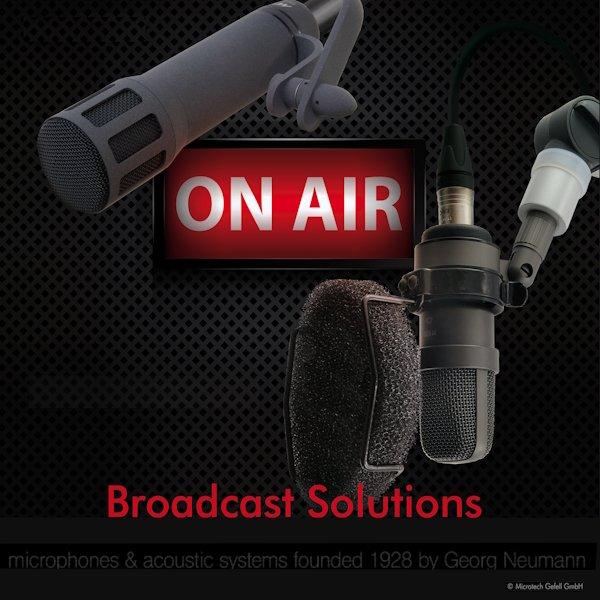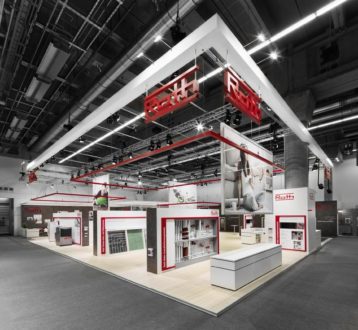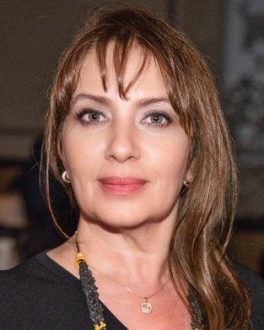
100 years of radio and microphone history – From the Reisz marble block microphone and the Neumann bottle up to broadcast microphones from Gefell
"Attention, attention! This is the Berlin broadcasting station, at Vox Haus. On radio wave 400 meters ", was the first announcement at the birth of German radio on October 29, 1923."
The microphone technology of this time was as legendary as this announcement – a "REISZ" carbon cross-flow microphone, developed by Georg Neumann in Eugen Reisz’s laboratory in the 1920s.
The first radio station, "Funk-Stunde Berlin", used "Reisz microphones" from the very beginning, such as the M 104, also known as the "Marmorblock" or "Reisz-Marconi microphone", as it was marketed by the Marconi company.
Dissatisfied with the acoustic properties, especially the noise behavior, Georg Neumann then concentrated on the idea of producing microphones based on the capacitive transducer principle in a new company.
From idea to reality
On November 23, 1928, Georg Neumann and Erich Rickmann founded the limited partnership Georg Neumann & Co. in Berlin.
The aim was to develop microphones in which the sound waves cause the membrane of a capacitor to vibrate and are thus converted into an electrical signal through changes in capacitance.
As early as 1927, Georg Neumann developed two prototypes of the CMV (condenser microphone amplifier), initially in a square housing with an attached capsule.
The CMV3, which was manufactured for over 15 years and sometimes also referred to as the original Neumann, was the third version finally suitable for series production, with a Telefunken RE 084k electron tube.
In 1928 it was further developed into the Neumann CMV3 or Telefunken condenser microphone ELA M 301/1 in bottle form. Even today, old Neumann microphones are often regarded as Telefunken devices. The reason for this is that Georg Neumann signed a worldwide distribution contract for his microphones with the AEG subsidiary Telefunken after the market launch of the CMV3.
As a result, all Neumann export microphones bore the Telefunken logo and a Telefunken serial number. This did not change until the late 1950s, when Georg Neumann set up his own US sales organization.
Radio as a mass medium and recording technology in the 1930s
The massive expansion of state radio in the 1930s also led to a growing demand for microphone technology.
Known as the "Neumann bottle" or, due to its misuse by Nazi propaganda in the USA, as the "Hitler bottle", the CMV3 was manufactured in large numbers in the 1930s and shaped recording technology in the developing radio sector.
From 1932, Neumann used the M7 capsule, which would later be used in many post-war Neumann models. The first series capsule with the designation M 1-2 was produced before the company was founded, followed by a pressure gradient capsule of the M7 type, which is still manufactured exclusively in Gefell to this day according to Neumann’s original specifications.
Neumann microphones were widely used, for example as speaker microphones in radio broadcasts or in recording studios with stars such as Marlene Dietrich, Zarah Leander, Marika Rökk, Hans Albers or Johannes Heesters.
Participation in the "Great German Radio Exhibition" in 1933 led to a massive increase in production and exports. During this time, agencies were established in England, France, the USA and India.
The 1936 Olympic Games in Berlin provided a major impetus for radio development. The Olympics were broadcast directly on the radio for the first time. 41 radio stations received licenses, there were 68 broadcasting locations and 3000 broadcasts in 40 countries.
The Neumann microphones passed their "live test" in front of a large audience and quickly became the broadcasting standard.
One success factor was that even the first version of the CMV in a low-frequency tube circuit could be fitted with interchangeable capsules with different directional characteristics.
In response to the rapid development of radio broadcasting and the associated demand for innovative microphone and recording technology, Georg Neumann also developed a series of new sound recording and record-playing devices, such as a particularly lightweight electrodynamic pickup with extremely low restoring force for repeated playback of wax records.
Hard times – Georg Neumann & Co. in the 1940s and the post-war period
Despite unexpected strokes of fate, such as the death of co-founder and co-owner Erich Rickmann, the company advanced to become a leading manufacturer of radio microphones in the 1930s and 1940s.
After the death of Erich Rickmann on March 24, 1938, Georg Neumann & Co was continued in the spirit of the deceased co-owner by Georg Neumann together with his plant manager Erich Kühnast.
Another fateful year was 1943, when the headquarters in Michaelkirchstraße in Berlin was severely damaged by bombs. As a result, the entire company was relocated to Gefell. Both the Neumann and Kühnast families, as well as almost all employees, moved to Gefell and continued production of the CMV 3 with large diaphragm capsule M 7 in a former textile company.
The years 1946 and 1947 were decisive for the further history of the company.
In 1946, employees returning from Gefell founded a workshop in Berlin (West), which mainly dealt with microphone repairs. This workshop developed into Georg-Neumann GmbH, the second Neumann company. Georg Neumann GmbH, part of the Sennheiser Group since 1991,
is today a leading company in the field of electro-acoustic transducer technology with high-end solutions for customers in the TV, radio, recording and production sectors.
In 1947, Georg Neumann moved from Gefell to Heilbronn, where he set up a production of accumulators based on his own patents. He transferred the management of the limited partnership Georg Neumann & Co. to Erich Kühnast, who remained in Gefell with the rest of the workforce.
Until the Berlin Wall was built in 1961, Georg Neumann tried to support the Gefell company and remained closely associated with it until his death in 1976.
At the end of the 1950s, Georg Neumann & Co. and Georg Neumann GmbH in Berlin agreed on the equal use of the trademark created by Erich Kühnast in 1949 (a stylized microphone bottle with the inscription Neumann). Georg Neumann GmbH merely added a diamond in the background to distinguish it.
The Neumann brand was banned in 1972 when the company was expropriated and renamed VEB Mikrofontechnik Gefell and replaced by the brand "RFT" (RFT Radio- und Fernmelde-Technik).
Until the 1950s, the condenser microphones CMV 4 and GN M 14 a, which was also used as a reporter microphone, were initially manufactured in Gefell.
The GN M14, also known colloquially as the "Thälmann microphone", was developed in close cooperation with the Rundfunk und Fernsehtechnisches Zentralamt Berlin (RFZ). The name comes from the fact that the M 14 was used as a pair of M 14 S microphones for stereo sound recordings of the DEFA feature film "Ernst Thälmann – Führer seiner Klasse" in 1954/55.
In the 1950s, the Berlin radio stations were rebuilt and both the familiar and new microphone types were manufactured in Gefell, such as the CMV 563 tube microphone preamplifier with the M 55, M 7 , M 8 , M 9 microphone capsules and the UM 57 tube condenser microphone with switchable directional characteristic, omni-cardioid-eight.
The wave of centralization in 1952 also led to changes in broadcasting. GDR radio moved to a new location. From then on, all radio programs were broadcast from the Funkhaus Nalepastraße in Berlin.
In the following decades, the focus was increasingly on producing information and entertainment for the East German population using its own microphone and transmission technology, also in order to compete with Western radio stations.
A new start after reunification
In 1993, the limited partnership Georg Neumann & Co. – now Georg Neumann KG – regained its company, Microtech Gefell GmbH. The former shareholders, Jochem Kühnast, son of the former company director Erich Kühnast, and Christian Drechsler and their families, were forced by the state to give up the brand for over twenty years. The limited partnership Georg Neumann & Co, now Georg Neumann KG, regained Microtech Gefell GmbH.
After two decades of state-enforced abandonment of the "Neumann" brand, the company began to produce under the new registered brand "MTG".
Microphones made in Gefell, such as the M 930, are still considered the audio gold standard to this day and are used in many German broadcasting stations
Conclusion
Georg Neumann & Co, Elektrotechnisches Laboratorium Gefell i.V., RFT Mikrofontechnik Gefell and, last but not least, Microtech Gefell GmbH – these different names for one and the same company bear witness to the social upheavals that the company has had to survive in its 95-year history. However, nothing has changed in the company’s claim to supply the best possible broadcast microphones, in keeping with the tradition of its founder
Acoustic measurement technology since 1928
The Microtech Gefell GmbH is manufacturer of high quality, handmade measurement and studio microphones founded 1928 by Georg Neumann.
Besides the company offers calibration and services for all manufactured products.
The Measurement technology includes 1", ½" and ¼" measurement capsules, measurement preamplifiers for different connection techniques (Conventional Lemo, ICP®, Phantom P 48 XLR, Digital USB AES 42 XLR), outdoor and environmental microphones, microphone arrays, sound intensity probes, power supplies, calibration devices as well as turnkey solutions (e.g. special test benches for car acoustics).
Microtech Gefell GmbH
Georg-Neumann-Platz
07926 Gefell
Telefon: +49 (36649) 8820
Telefax: +49 (36649) 88211
https://www.microtechgefell.de
Sales Director
Telefon: +49 (36649) 882-20
Fax: +49 (36649) 882-11
E-Mail: u.wagner@microtechgefell.de
![]()




